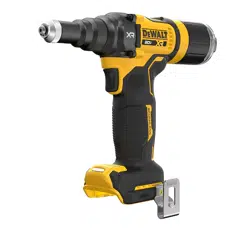Loading ...
Loading ...
Loading ...

ENGLISH
6
READ ALL INSTRUCTIONS
Important Safety Instructions for All
Battery Packs
WARNING: Read all safety warnings, instructions,
and cautionary markings for the battery pack,
charger and product. Failure to follow the
warnings and instructions may result in electric
shock, fire and/or seriousinjury.
• Do not charge or use the battery pack in explosive
atmospheres, such as in the presence of flammable
BATTERIES AND CHARGERS
The battery pack is not fully charged out of the carton.
Before using the battery pack and charger, read the
safety instructions below and then follow charging
proceduresoutlined. When ordering replacement battery
packs, be sure to include the catalog number andvoltage.
The label on your tool may include the following symbols. The
symbols and their definitions are asfollows:
V ......................... volts
Hz .......................hertz
min ..................... minutes
or DC ......direct current
...................... Class I Construction
(grounded)
…/min ..............per minute
BPM .................... beats per minute
IPM ..................... impacts per minute
OPM ....................
oscillations per minute
RPM ....................
revolutions per minute
sfpm ...................
surface feet per minute
SPM .................... strokes per minute
A ......................... amperes
W ........................watts
Wh ......................watt hours
Ah ....................... amp hours
or AC ...........alternating current
or AC/DC .... alternating or direct
current
...................... Class II Construction
(double insulated)
n
o
.......................no load speed
n .........................rated speed
PSI.......................
pounds per square inch
......................earthing terminal
.....................safety alert symbol
..................... visible radiation–
do not stare into
the light
..................... wear respiratory
protection
..................... wear eye protection
..................... wear hearing
protection
..................... r
ead all documentation
.....................
do not expose to rain
• Use the appropriate dust extractor vacuum to remove
the vast majority of static and airborne dust. Failure
to remove static and airborne dust could contaminate the
working environment or pose an increased health risk to
the operator and those in closeproximity.
• Use clamps or other practical ways to secure and
support the workpiece to a stable platform. Holding
the workpiece by hand or against your body is unstable
and may lead to loss of control andinjury.
• Air vents often cover moving parts and should be
avoided. Loose clothes, jewelry or long hair can be caught
in movingparts.
CAUTION: When not in use, place tool on its side
on a stable surface where it will not cause a
tripping or falling hazard. Some tools with large
battery packs will stand upright on the battery pack
but may be easily knockedover.
Additional Safety Information
WARNING: Never modify the power tool or any part of
it. Damage or personal injury couldresult.
WARNING: ALWAYS use safety glasses. Everyday
eyeglasses are NOT safety glasses. Also use face or
dust mask if cutting operation is dusty. ALWAYS WEAR
CERTIFIED SAFETYEQUIPMENT:
• ANSI Z87.1 eye protection (CAN/CSA Z94.3),
• ANSI S12.6 (S3.19) hearing protection,
• NIOSH/OSHA/MSHA respiratoryprotection.
WARNING:
Some dust created by power sanding,
sawing, grinding, drilling, and other construction
activities contains chemicals known to the State
of California to cause cancer, birth defects or
other reproductive harm. Some examples of these
chemicalsare:
• lead from lead‑based paints,
• crystalline silica from bricks and cement and other
masonry products, and
• arsenic and chromium from
chemically‑treatedlumber.
Your risk from these exposures varies, depending on
how often you do this type of work. To reduce your
exposure to these chemicals: work in a well‑ventilated
area, and work with approved safety equipment, such
as those dust masks that are specially designed to filter
out microscopicparticles.
• Wear protective clothing and wash exposed areas
with soap and water. Allowing dust to get into your
mouth, eyes, or lie on the skin may promote absorption
of harmfulchemicals. Direct particles away from face
andbody.
• Operators and others in work area must wear ANSI Z87.1
CAN/CSA Z94.3 or other approved safety glasses with side
shields. Always wear safety glasses and ear protection
duringoperation.
• Adequate clearance is required for the tool operator’s
hands beforeproceeding.
• Do not operate a tool that is directed towards any
person(s).
• DO NOT operate tool with the nose housingremoved.
• Do not operate the tool or the charger in an explosive
atmosphere or environment allowing exposure to
combustible fluids orgases.
• Do not operate the tool or the charger in an environment
allowing exposure to moisture or rain to avoid risk of
electricshock.
• Do not abuse the tool by dropping or using it as ahammer.
• Keep dirt and foreign matter out of the air vents of the tool
as this will cause the tool tomalfunction.
• Keep tool handles dry, clean, and free from oil andgrease.
• When carrying the tool from place to place keep hands
away from the trigger to avoid inadvertentactivation.
• Never leave installation toolunattended.
• Disconnect battery when tool is not inuse.
Loading ...
Loading ...
Loading ...
